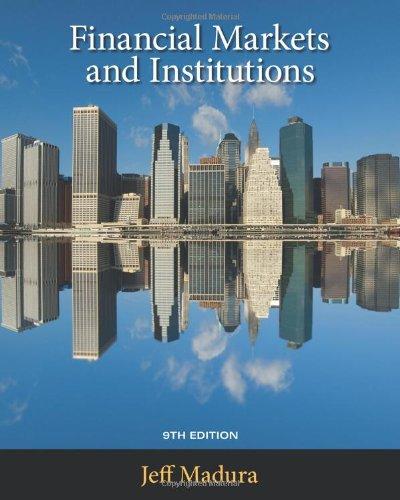Question
1. Which of the following is true of U.S. Treasury Bills? A. They have a relatively large probability of default. B. They have infinite life,
1.
Which of the following is true of U.S. Treasury Bills?
| A. | They have a relatively large probability of default. | |
| B. | They have infinite life, also described as a perpetuity. | |
| C. | They pay coupons at the end of each quarter (every 3 months) and return the face value at maturity. | |
| D. | They have a time to maturity of less than or equal to 1 year. | |
| E. | They pay coupons that increase at a constant percentage rate throughout their life. |
2.
You are trying to price two bonds that have the same time to maturity of 3 years and the same par value of $1,000 but different coupon rates and different yields to maturity. Bond A has a coupon rate of 7% and a yield to maturity of 7%. Bond B has a coupon rate of 5% and a yield to maturity of 6%. What is the absolute value of the difference between the price of Bond A and Bond B?
| A. | $15.66 | |
| B. | $26.73 | |
| C. | $3.33 | |
| D. | $0 | |
| E. | $9.16 |
Step by Step Solution
There are 3 Steps involved in it
Step: 1

Get Instant Access to Expert-Tailored Solutions
See step-by-step solutions with expert insights and AI powered tools for academic success
Step: 2

Step: 3

Ace Your Homework with AI
Get the answers you need in no time with our AI-driven, step-by-step assistance
Get Started


